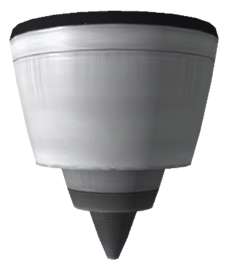J-33 "Wheesley" Turbofan Engine
| J-33 "Wheesley" Turbofan Engine | ||
| Jet engine by C7 Aerospace Division | ||
| Radial size | Small | |
| Cost | (total) | 1 400.00 |
| Mass | (total) | 1.500 t |
| Drag | 0.2 | |
| Max. Temp. | 2000 K | |
| Impact Tolerance | 7 m/s | |
| Research | | |
| Unlock cost | 4 000 | |
| Since version | 0.15 | |
| Part configuration | jetEngineBasic.cfg | |
| Maximum thrust | 120.00 kN | |
| Isp | (max) | 10500 s |
| Fuel consumption | 0.23 | |
| Intake air consumption | 29.60 | |
| Thrust vectoring | No | |
| Electricity generated | 4 ⚡/s | |
| Testing Environments | ||
| On the surface | Yes | |
| In the ocean | Yes | |
| On the launchpad | Yes | |
| In the atmosphere | Yes | |
| Sub-orbital | No | |
| In an orbit | No | |
| On an escape | No | |
| Docked | No | |
| Test by staging | Yes | |
| Manually testable | Yes | |
| Packed volume | None | |
The Basic Jet Engine is an air-breathing engine which uses liquid fuel and intake air.
Usage
This engine cannot function effectively at a height of much more than 5 km, but it is much more efficient to use jet engines in the lower atmosphere. The basic jet engine works at full power while stationary, whereas the TurboJet Engine won't get up to full power until it reaches 1000 meters/second surface velocity. This makes it ideal for low-flying aircraft, as the engine has a thrust of about 100 kilonewtons on the runway and an Isp of about 850. However, for high-flying aircraft, the TurboJet engine should still get you off the runway.
Note that currently, the only planets which these engines will work on is Kerbin, and Jool's moon Laythe.
Description
| “ | A highly advanced replacement model of the Ax-300 series of engines. This new model features the latest in thrust vectoring and compression technology. This engine is suitable for normal crusing speeds and altitudes. — C7 Aerospace Division |
” |
Created by: C. Jenkins
Changes
- Initial Release
